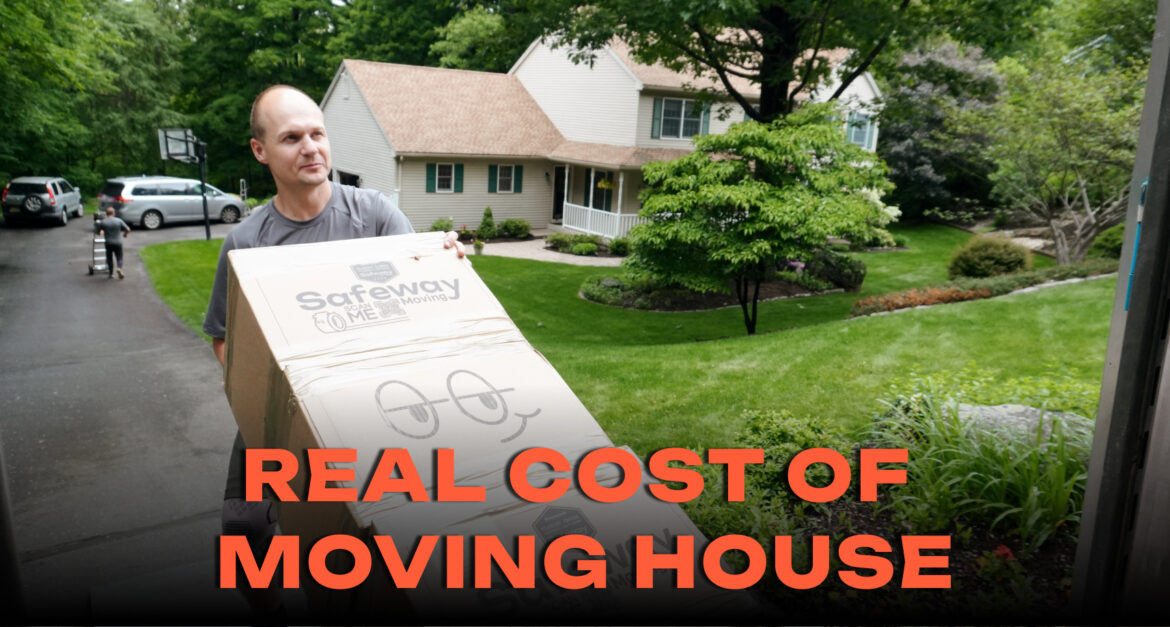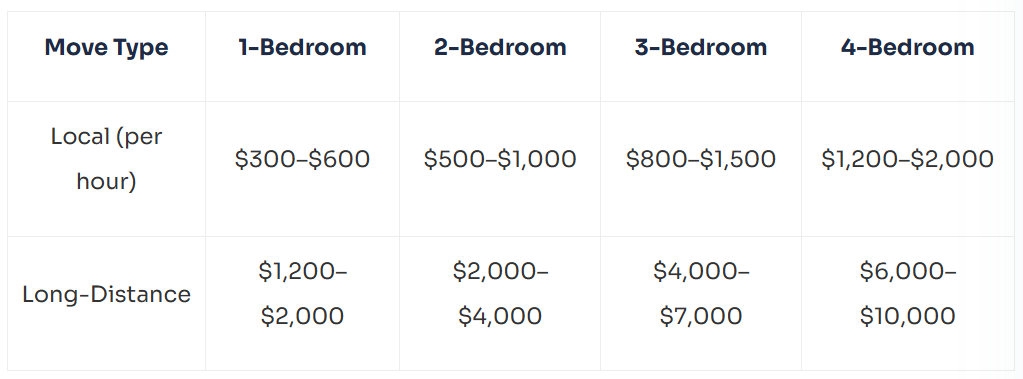
Moving house is one of life’s most significant transitions. Whether you’re relocating across town or across the country, the process involves more than just transporting your belongings. From planning and packing to hiring professional movers and settling into a new home, every aspect of moving comes with a cost , some expected, some not. In this comprehensive guide, we’ll explore the real cost of moving house, how to estimate your expenses accurately, and how Safeway Moving can help make the transition smoother and more budget-friendly.
What is the Average Cost of Moving House?
The average cost of moving house can vary significantly depending on several factors such as distance, size of the move, additional services, and even the time of year. While it might be tempting to rely on a general number, a detailed breakdown is essential for proper budgeting.
Understanding Moving Costs
For local moves (within 100 miles), most movers charge by the hour. On the other hand, long-distance moves are typically charged based on weight, distance, and the services requested. Here’s a general cost breakdown:

These are only estimates. The actual cost can vary based on location, packing needs, complexity of the move, and mover reputation. Safeway Moving, for instance, provides free in-home or virtual estimates to give you a transparent and accurate cost overview before you commit.
Factors That Affect Moving Costs
- Distance: The farther you move, the more you pay due to fuel, time, and logistics.
- Size of Move: More rooms or bulky items like pianos and pool tables increase labor and transport requirements.
- Additional Services: Packing, storage, furniture disassembly, and specialty item handling add to the final bill.
- Time of Year: Summer is peak moving season, so expect higher rates. Moving during winter or weekdays can reduce costs.
Key Factors That Influence the Cost of Moving
Moving is a multi-step process, and costs can sneak in at various stages if you’re not careful. Knowing the major cost contributors can help you plan ahead and stay within budget.
Common Cost Factors
- Packing Supplies: Boxes, tape, bubble wrap, and packing paper add up quickly. Safeway Moving offers affordable packing supply kits and eco-friendly options for a greener move.
- Labor Costs: Whether hourly for local moves or flat-rate for long-distance, labor is one of the most significant expenses.
- Truck Rental & Fuel: If you’re going DIY, these costs can still be substantial, especially with long-distance hauls.
- Insurance & Valuation: Basic liability is included with most moves, but full-value protection is recommended, particularly for valuable belongings.
- Storage: Sometimes there’s a gap between moving out and moving in. Temporary storage can be an added cost you must account for.
Pro Tips to Control Moving Expenses
- Declutter First: Fewer items mean less packing, less time, and lower cost.
- Plan Early: Early bookings typically come with better rates.
- Compare Quotes: Always get multiple estimates. Safeway Moving offers binding quotes to ensure no surprises.
Hidden Costs That Often Get Overlooked
Even the most well-planned move can encounter unexpected expenses. These hidden costs can catch you off guard and strain your budget if you’re not prepared. Knowing what to watch for is half the battle.
Less Obvious Expenses That Can Add Up
- Elevator or Stair Fees: Moving from or into a building with no elevator, or requiring many stairs, may incur additional labor fees.
- Long Carry Charges: If the moving truck can’t park close to your home, extra distance to carry items can lead to more fees.
- Shuttle Fees: For locations where large trucks can’t be used, smaller shuttle vans may be required, adding to your total.
- Utility Deposits and Activation Fees: Hooking up internet, electricity, and water in your new home can cost several hundred dollars.
- Cleaning Costs: Whether it’s hiring cleaners for your old home or sprucing up your new one, this cost can’t be overlooked.
How Safeway Moving Helps You Avoid Surprises
- Transparent Quotes: Safeway Moving provides a detailed estimate with no hidden fees.
- Virtual Surveys: Get an accurate quote by showing your inventory online.
- Upfront Planning: Our moving consultants work with you to identify and plan for potential hidden costs in advance.
Saving Money Without Compromising Quality
While moving is undoubtedly costly, there are numerous ways to reduce expenses without cutting corners. The trick is knowing where you can economize and where it’s better to invest in quality.
Smart Strategies to Cut Costs
- Declutter and Donate: Reduce your load to lower transportation costs.
- Use Recycled Packing Materials: Save on boxes and bubble wrap.
- Book Off-Season: Moving during fall or winter often comes with better rates.
- Bundle Services: Safeway Moving offers packing, loading, and storage in all-in-one packages, often at discounted prices.
Areas Where You Shouldn’t Skip
- Insurance: Always opt for full-value coverage for peace of mind.
- Experienced Movers: Inexperienced labor can lead to damage and delays.
- Proper Equipment: Tools like dollies, moving blankets, and straps are essential.
Why You Should Choose Safeway Moving
With so many moving companies in the market, it’s crucial to choose one that aligns with your needs and budget. Safeway Moving has built a reputation for transparency, professionalism, and reliability, all at competitive prices.
What Sets Safeway Moving Apart
- Declutter and Donate: Reduce your load to lower transportation costs.
- Use Recycled Packing Materials: Save on boxes and bubble wrap.
- Book Off-Season: Moving during fall or winter often comes with better rates.
- Bundle Services: Safeway Moving offers packing, loading, and storage in all-in-one packages, often at discounted prices.
The cost can range from $800 to $1,500 for a local move and $4,000 to $7,000 for a long-distance move. Factors like distance, packing needs, and services required will influence the total price.
In most cases, moving expenses are no longer tax deductible for personal moves. However, if you’re relocating for a job or are active-duty military, you may still qualify.
Full-service packages include packing, loading, transportation, unloading, and unpacking. You also get access to packing supplies and temporary storage options.
Absolutely! Moving in the fall or winter — or even mid-month and mid-week — can result in significant savings due to lower demand.










